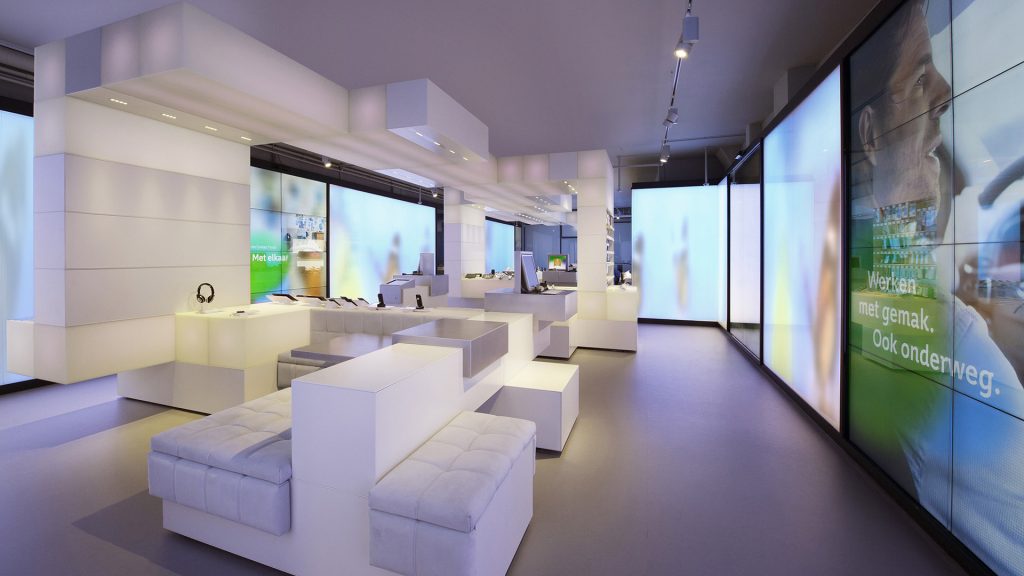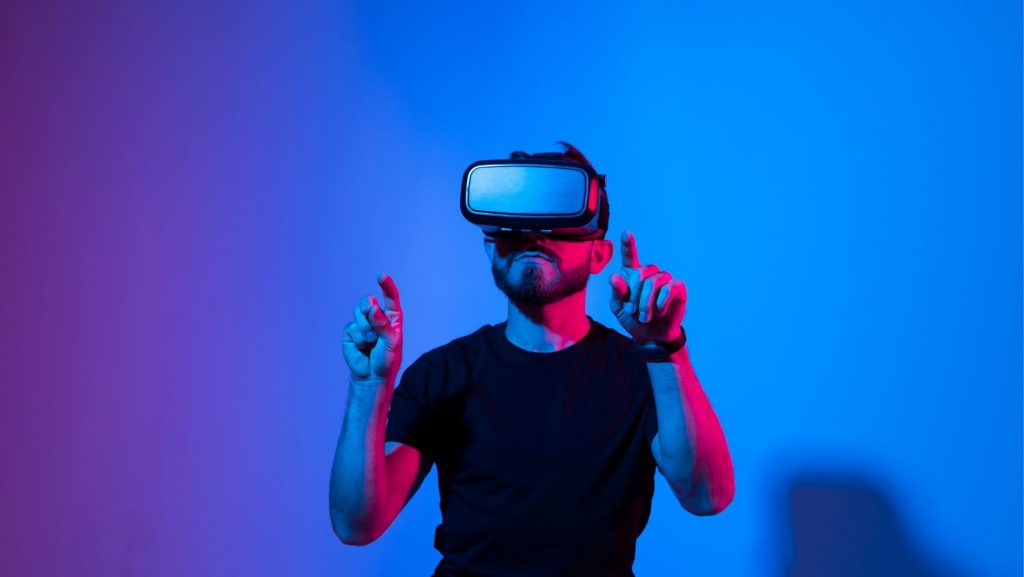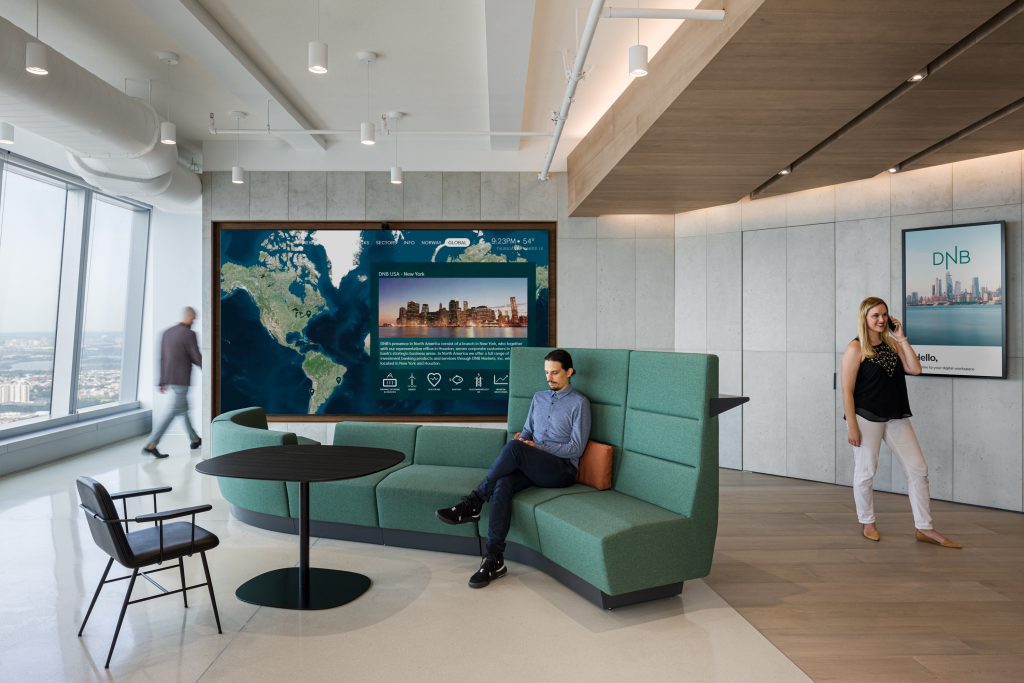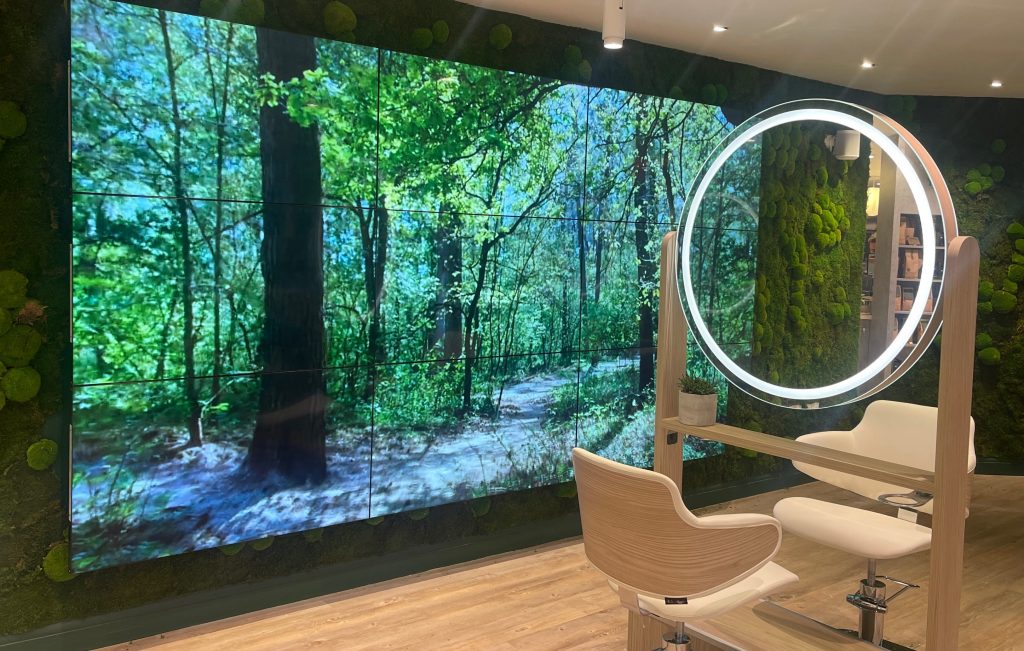Get ready to stay ahead of the game in 2023! As Digital Signage experts and international leaders in the field, we’re sharing our top 8 trend predictions for the industry. From pioneering new technologies and design principles to delivering sustainable and green solutions, our team is always pushing the boundaries of what’s possible.
Join us as we explore the ever-changing landscape of Digital Signage and discover how your business can stay ahead of the competition.

1. QSR gets smart: How Digital Signage is revolutionizing the food industry
In today’s fast-paced world, consumers are looking for convenience and efficiency more than ever. This shift in behavior is driving innovation across the Quick Service Restaurant (QSR) industry, and Digital Signage is at the forefront of this change.
One of the key ways that Digital Signage is revolutionizing QSRs is by making the ordering and fulfillment process faster and smarter. Rather than displaying the entire menu, AI technologies are being used to prioritize items that are ready to go, increasing efficiency and decreasing customer wait times. This not only improves the overall customer experience but also helps to reduce food waste, both from an economic and sustainability perspective.
But it’s not just about speed; Digital Signage is also being used to create personalized experiences for customers. By using data and analytics, Digital Signage can display menu items based on a customer’s previous orders or even their dietary restrictions. This level of personalization not only improves the customer experience but also helps to increase sales and loyalty.
In conclusion, Digital Signage is revolutionizing the QSR industry by making ordering and fulfillment faster, smarter and more personalized. With the increasing use of AI technologies, we can expect to see even more innovation in the future. Stay ahead of the game by implementing these smart features in your restaurant or drive-thru today!

2. Self-serve simplicity: How Digital Signage is changing the way we order food
In the world of Quick Service Restaurants (QSRs), customers want convenience and simplicity above all else. Recent research suggests that customers prefer self-service options rather than traditional cashier lines, and businesses are taking note. We’re seeing more and more QSRs adopt digital solutions, with kiosks in particular becoming increasingly popular.
Kiosks are an efficient way to speed up the ordering process, allowing customers to place their orders quickly and easily. Digital menu boards are also being repurposed to display customer waiting information, helping to reduce lines and improve the overall customer experience. Additionally, businesses are using kiosk content to incorporate more targeted ads and customer prompts, driving upsells and increasing revenue.
The rise of self-service options is not only beneficial for customers, but it also helps businesses to increase efficiency and reduce labour costs. By implementing kiosks and other digital solutions, QSRs can streamline the ordering process and provide a better overall experience for customers.
In conclusion, self-service options are becoming increasingly popular in the QSR industry and Digital Signage is playing a big role in that change. Adopting digital solutions such as kiosks and repurposed digital displays can help businesses to increase efficiency, reduce labour costs and improve the customer experience. As consumers continue to prioritize convenience and simplicity, self-service options are sure to become the new norm in the world of QSRs.

3. Unified Commerce: How brands are streamlining their online and offline presence
In today’s rapidly changing retail landscape, brands are looking for new ways to stay competitive. One of the latest trends is the move towards unified commerce, a setup where all platforms are seamlessly integrated and operate within the parameters of both the online and offline space.
The key to achieving this is a future-proof CMS (content management system) that allows for easy and unified asset management. This means that key players within a brand can easily publish campaigns across all platforms, creating a unified presence that resonates with customers.
A unified commerce setup has several benefits for brands. By integrating online and offline platforms, brands can improve customer experience and increase sales. Additionally, it allows brands to better track and analyze customer data, enabling them to make data-driven decisions about their marketing and sales strategies.
Furthermore, it allows for a more efficient use of resources, as brands will no longer have to duplicate efforts to create and manage content for different platforms. This can also help to improve the brand’s overall online reputation by creating a consistent look, feel and message across all platforms. ZetaDisplay has a new and exciting partnership that we will be sharing in a short while, where brands will have a complete overview of their marketing assets in one place.
In conclusion, the move towards unified commerce is a trend that is gaining momentum in the retail industry. By implementing a future-proof CMS system, brands can streamline their online and offline presence, improve customer experience and increase sales. Brands that adopt a unified commerce setup will be well-positioned to thrive in an ever-changing retail landscape.

4.Time is ticking: How Digital Signage is catering to different types of shoppers
In today’s fast-paced world, retail customers have different expectations when it comes to their shopping experience. As a result, we’re seeing two distinct types of shoppers emerge: those who want their time given back and those who want to spend their time well.
Time given back shoppers prioritize efficiency and speed. They want Digital Signage to enhance their shopping experience by making it faster and more convenient. Features such as self-checkout kiosks and digital menu boards can help to speed up the process, allowing customers to get in and out of the store quickly.
On the other hand, time well-spent shoppers are looking for an immersive and engaging in-store experience. They crave the theatrical flourishes and brand storytelling that can only be found in physical stores. Digital Signage can play a big role in creating this kind of experience. For example, by using interactive displays and augmented reality, retailers can create engaging, brand-centric experiences that captivate shoppers.
In conclusion, the retail customer’s expectations have changed, and retailers must adapt to meet the needs of both types of shoppers. By using Digital Signage, retailers can cater to the needs of time-given back shoppers by enhancing efficiency, while also providing a unique and engaging in-store experience for time well-spent shoppers. This way retailers can cater to the needs of all types of customers, and ultimately increase sales and customer loyalty.

5. Meet in the Metaverse: How Digital Signage is branching into the virtual world
The Metaverse, a virtual world where users can interact with digital content and each other, is still in its infancy. But it’s a trend that’s gaining momentum, and one that Digital Signage should be paying attention to.
The Metaverse offers brands new ways to bring the digital experience into the physical store. By creating virtual storefronts, brands can reach targeted audiences in a new and unique way. Additionally, the Metaverse provides an opportunity to explore tailored and personalized content, which can enhance the customer’s experience and drive sales.
One of the key benefits of the Metaverse for Digital Signage is the ability to reach a global audience. Unlike physical storefronts, virtual storefronts can be accessed from anywhere in the world, providing an opportunity to expand the brand’s reach and increase its customer base.
Additionally, the Metaverse also provides an opportunity for brands to create immersive, brand-centric experiences that captivate shoppers. By using virtual reality and augmented reality, brands can create a unique and engaging experience that sets them apart from the competition.
In conclusion, the Metaverse is a trend that is worth paying attention to. It offers brands new ways to bring the digital experience into the physical store, reach targeted audiences and create immersive, brand-centric experiences. As the Metaverse continues to evolve, it’s an opportunity for Digital Signage to branch into a new and exciting space.

6. Hybrid workplace: The destination of the future
The way we work is changing, and so is the design of the modern office. Companies are looking for ways to make the office a destination that helps to foster a positive company culture and improve employee engagement. One way to achieve this is by introducing new and exciting experiences into the workplace.
By creating an environment that is dynamic, interactive and visually appealing, companies can create a fun and engaging space that encourages and motivates employees. This can be achieved by introducing large-scale and immersive installations that can be used for everything from town hall meetings to individual experiences.
These installations can serve as a window to showcase the company’s values and mission to guests and visitors, as well as helping employees feel a sense of connection to the company. Additionally, by keeping the content, dynamic and functional of the office fresh and exciting, companies can retain employee engagement and enhance the overall experience of the workplace.
In conclusion, the hybrid workplace of the future is a destination that helps to foster a positive company culture and improve employee engagement. By introducing new and exciting experiences, companies can create a fun and engaging environment that keeps employees motivated and engaged. This is becoming a key element to retain employee engagement and enhance the overall experience of the workplace.

7. Generative content and forced perspective: How Digital Signage is evolving to meet the demands of the future
Digital Signage is constantly evolving, and there are a few buzzwords that you should pay attention to. One of them is generative content, which is content that is intelligently generated without relying on human creation. Content that relies on sensors or input from AI or bots to develop a specific theme based on algorithms and codes.
This type of content is more targeted to each audience, which means businesses can increase engagement, creativity, and personalization by integrating generative content into their framework. As a result, businesses will be able to stay ahead of the curve by providing relevant and personalized content that resonates with their target audience.
Another popular content technique that is still on the rise is 3D forced perspective. This technique is based on the illusion of depth and distance, and it’s been used extensively in Digital Signage to create engaging and immersive experiences. It’s a technique that has been around for a long time, but it’s recently gained popularity, particularly on LinkedIn. This technique is really useful to create a sense of scale and dimension in the digital signage. If you ever are in Oslo stop by our office to witness our large scale installation in the lobby of our building.
In conclusion, generative content and forced perspective are two of the most important buzzwords within content development for Digital Signage today. They represent the future of content production. By integrating generative content and forced perspective, businesses can increase engagement, creativity, and personalization, and provide relevant and personalized content that resonates with their target audience.

8. Long-term sustainability: How green Digital Signage is shaping the future
As the world becomes increasingly focused on sustainability, green Digital Signage is becoming a crucial aspect of the industry. Brands are starting to view this as a conscious investment that will be rewarding in the long run. By choosing hardware that is energy-efficient, they can reduce their environmental impact and save on energy costs.
One way to achieve this is by integrating automated features when the displays are not in use. This can include things like turning off the display or reducing the brightness level. This not only conserves energy reserves but also allows the display to operate at a lower brightness level without affecting the content.
Another way to make Digital Signage more sustainable is by using displays and other hardware that has lower environmental impact but from production and usage. Additionally, digital signage can be used to promote sustainable messages and practices to the customers, thus creating a positive impact on their behavior.
In conclusion, green Digital Signage is becoming a crucial aspect of the industry, and it’s something that brands should be paying attention to. By choosing energy-efficient hardware, integrating automated features, and using more environmentally friendly materials, brands can reduce their environmental impact, save on energy costs, and promote sustainable messages and practices. In the long run, investing in green Digital Signage will be beneficial for both the environment and the bottom line.
In summary, the Digital Signage industry is evolving and adapting to new trends such as AI-driven QSRs, self-service options, unified commerce, catering to different types of shoppers, the Metaverse, immersive hybrid workplaces, generative content and sustainability. These trends focus on providing a more efficient, personalized and sustainable customer experience.
